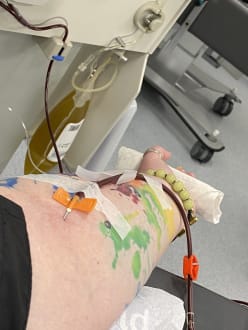Scientists have shown that light-sensitive retinal cells, grown in the lab from stem cells, can successfully integrate into the eye when implanted into blind mice. The technique opens up the possibility that a similar treatment could help people who have become blind through damage to their retinas to regain some of their sight.
Loss of light-sensitive nerve cells, known as photoreceptors, is a major cause of blindness in conditions such as age-related macular degeneration, retinitis pigmentosa and diabetes-related blindness. These conditions affect many thousands of people in the UK alone and there is no effective treatment at present. Scientists have been exploring the possibility of somehow replacing the photoreceptors, which come in two types: rods that help us see in low light conditions, and cones, which help us differentiate colours.
Robin Ali at University College London’s Institute of Ophthalmology and Moorfields Eye Hospital has previously shown that transplanting immature rod cells from the retinas of very young mice can restore vision in blind adult mice. It was a neat proof of concept, but the technique as it stood would be impractical as a way to treat people.
His latest work got around the problems of sourcing donor photoreceptor cells by growing and differentiating them from embryonic stem cells in a culture dish, rather than taking the cells from young mice. The donor photoreceptors developed normally once inside the adult mouse eyes and, crucially, formed nerve connections with the brain. The results are published on Sunday in the journal Nature Biotechnology — via redwolf.newsvine.com














 RSS – Posts
RSS – Posts